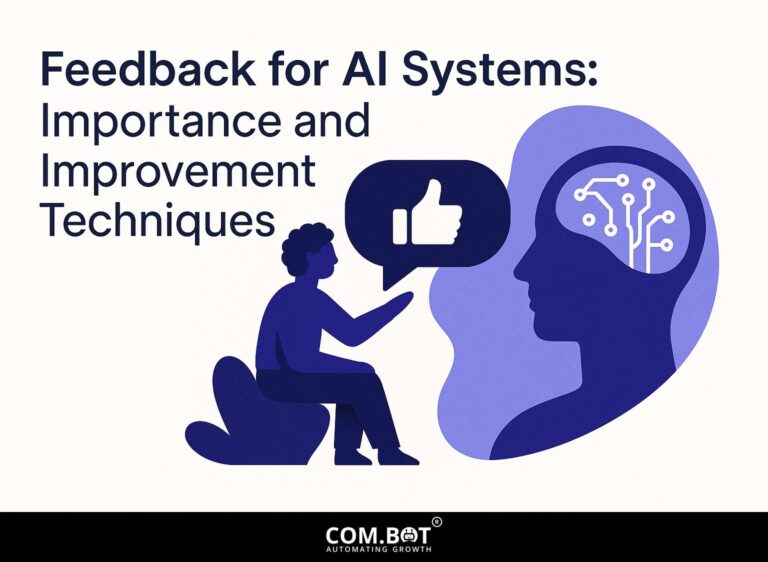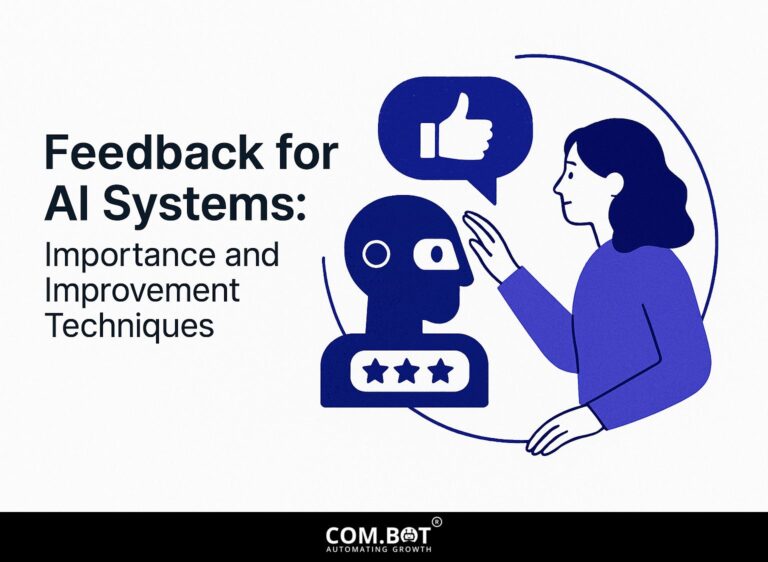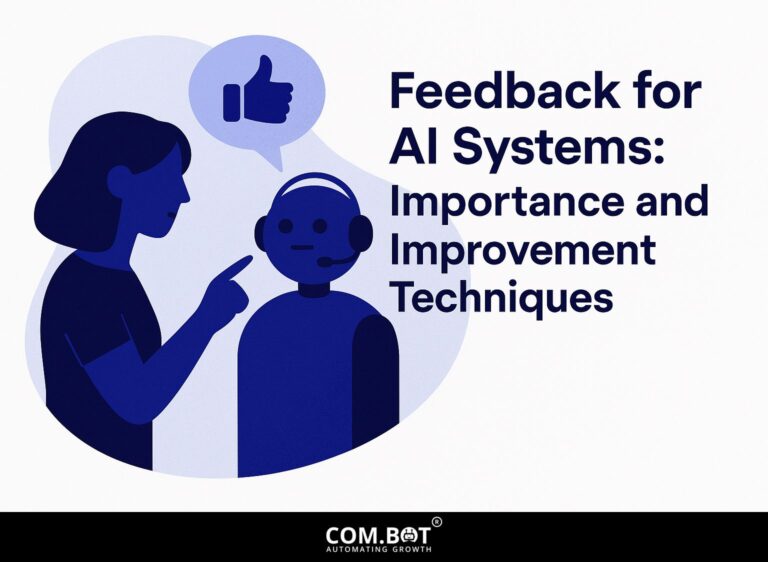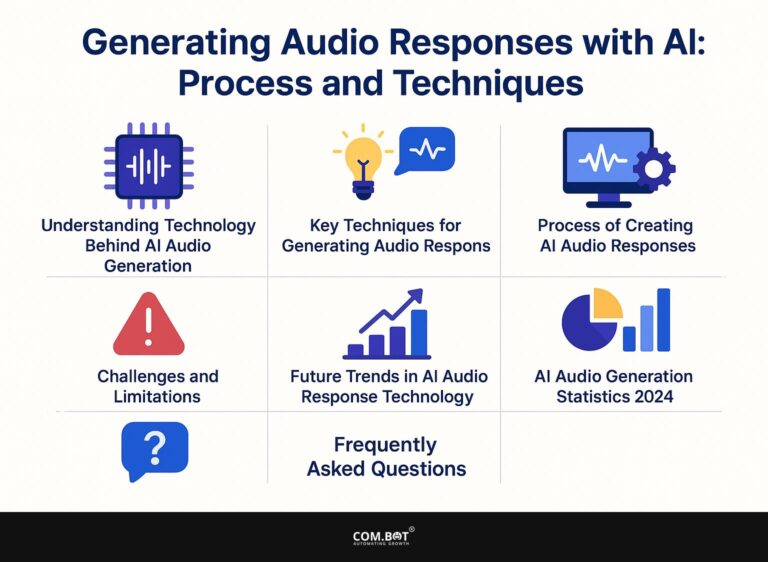Feedback for AI Systems: Importance and Improvement Techniques
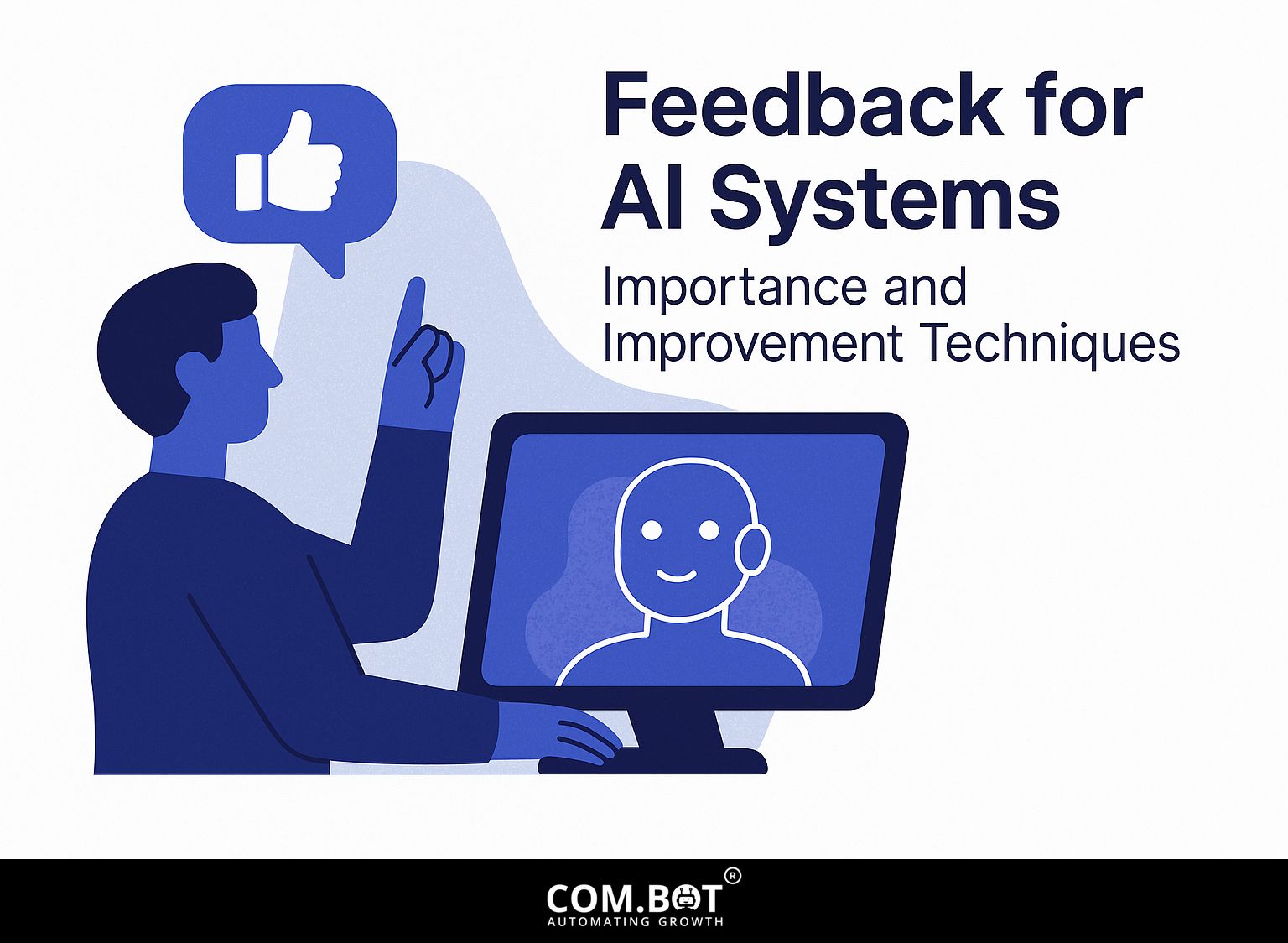
In the fast-changing field of AI systems, clear feedback is key for improving performance tracking, especially in machine learning. Using methods like Reinforcement Learning and tools like Label Studio, gathering and applying user feedback can greatly improve AI systems. This article explains why feedback is important for AI systems, looks at different ways to gather feedback, and provides practical tips to improve your AI solutions. Learn how to effectively use feedback to improve your AI’s performance!
Key Takeaways:
- 1 AI Feedback Improvement Stats
- 2 Types of Feedback
- 3 Methods for Collecting Feedback
- 4 Improvement Techniques
- 5 Challenges in Feedback Implementation
- 6 Future Trends in AI Feedback Systems
- 7 Frequently Asked Questions
- 7.1 Why is feedback important for AI systems?
- 7.2 How can feedback improve the accuracy of AI systems?
- 7.3 What are some techniques for providing effective feedback to AI systems?
- 7.4 How does feedback contribute to the continuous learning of AI systems?
- 7.5 What impact can feedback have on the ethical concerns surrounding AI systems?
- 7.6 How can collecting feedback from diverse sources benefit AI systems?
Definition of Feedback in AI
Feedback in AI is the information from users or systems that shows how well something is working and where it can be better.
This feedback can be categorized into positive feedback, which reinforces desired behaviors, and negative feedback, which highlights errors or shortcomings.
For example, reinforcement learning methods such as Q-learning adjust their actions based on rewards, which improves their decisions later on. In contrast, supervised learning models, such as neural networks, rely on labeled datasets that provide concrete examples of correct outputs.
By regularly including feedback in their training routines, these models change and get better, resulting in improved accuracy and performance over time.
Importance of Feedback for AI Systems
Feedback is important for AI systems because it helps them get better, adjust their algorithms, and become more accurate over time.
In reinforcement learning, feedback loops allow systems to learn from their environment by receiving rewards or penalties based on their actions.
Self-driving cars use live data from sensors and user comments to change how they drive. If a vehicle makes a wrong turn, the system detects the error and updates the route for next time.
Tools like TensorFlow and PyTorch are commonly used to create these flexible models, offering strong systems for creating advanced feedback loops that improve machine learning results. (Our guide on AI feedback techniques provides further insights into optimizing these systems.)
AI Feedback Improvement Stats
AI Feedback Improvement Stats
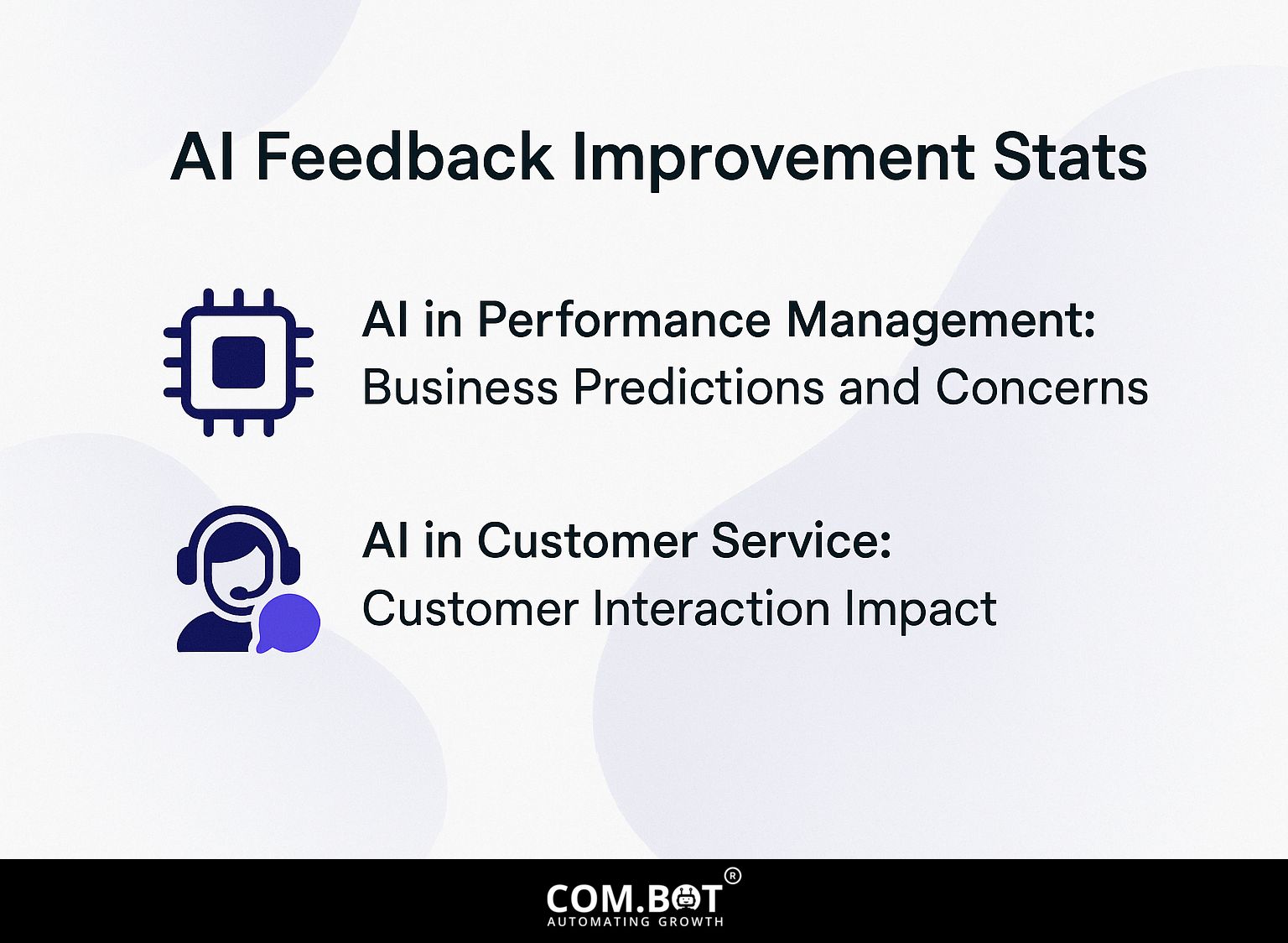
AI in Performance Management: Business Predictions and Concerns
AI in Customer Service: Customer Interaction Impact
The data on AI Feedback Improvement Stats gives a clear summary of how artificial intelligence is being used in performance management and customer service. It points out the positive and negative views business owners have about using AI, and how it changes customer service.
AI in Performance Management looks at how business owners see AI’s part. A significant 97% of business owners predict benefits from implementing AI in their operations. This positive outlook probably comes from AI’s ability to improve decision-making, make processes more efficient, and increase productivity. However, there is also a 40% concern about over-dependence on AI, reflecting apprehensions about losing control over business processes and the potential risks associated with AI systems.
In the realm of AI in Customer Service, the data indicates a complete integration of AI in customer interactions, with an expected 100% involvement. This shows a time where AI tools, like chatbots and systems that reply automatically, are basic to handling customer questions. Impressively, 80% of inquiries are resolved without human agents, showcasing AI’s efficiency in handling routine customer service tasks. This lowers operational expenses, allowing human agents to concentrate on more challenging problems that need individual attention.
- Opportunities: The statistics show that AI can greatly change how performance management and customer service work. Companies can gain by improving productivity, making better use of resources, and offering improved customer service.
- Challenges: The concerns about AI over-dependence highlight the need for balanced AI integration strategies that maintain human oversight and control, ensuring that AI acts as an enabler rather than a replacement.
Overall, the integration of AI into business processes is seen as a positive evolution, capable of driving significant improvements. However, careful management is needed to address concerns and make sure that AI improves business operations and keeps customers happy.
Types of Feedback
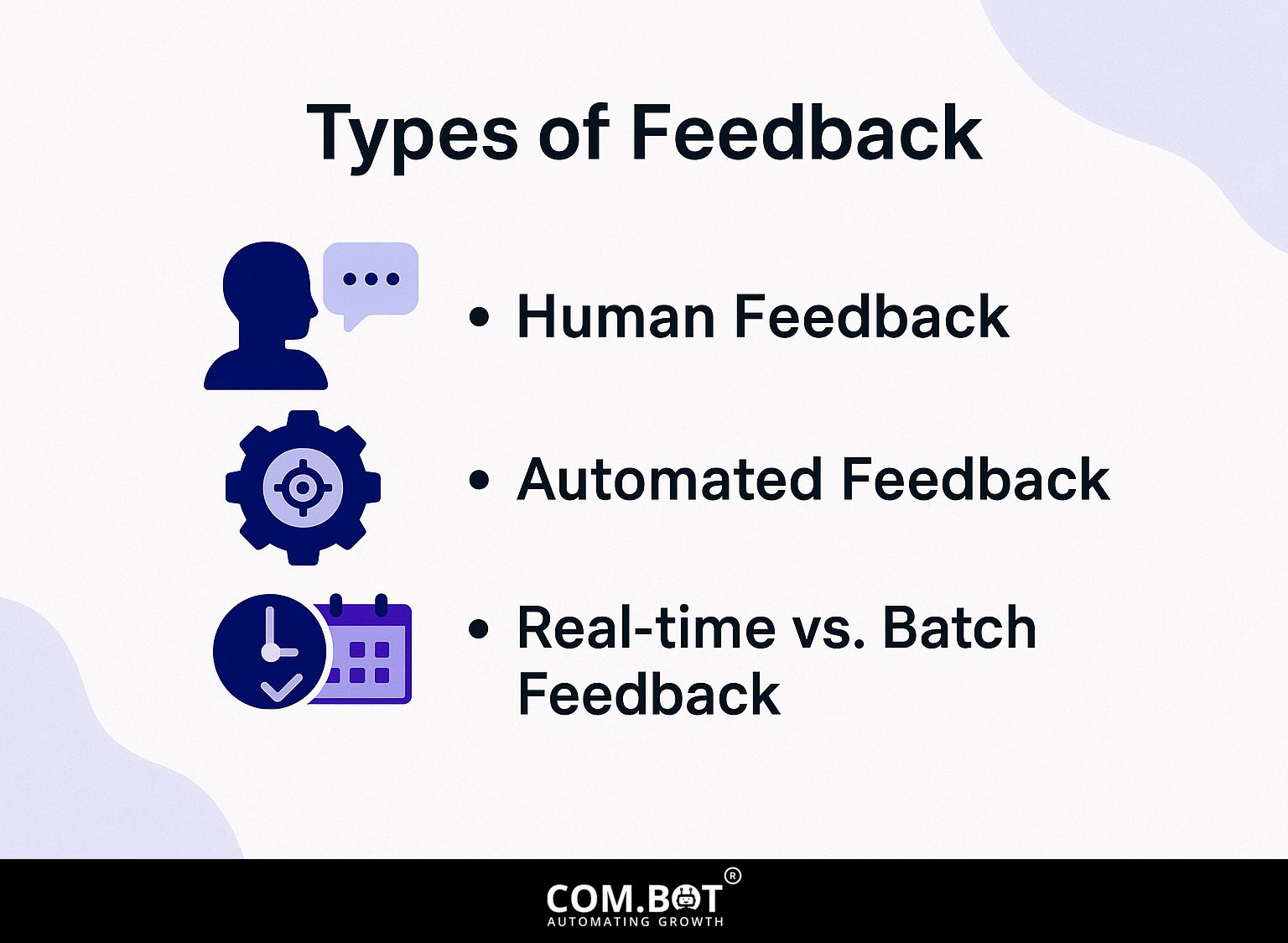
AI systems use different kinds of feedback, each having a specific role and helping make the model work well and keep users happy. To delve further into how feedback enhances these systems, you might find our discussion on its importance and improvement techniques particularly illuminating.
Human Feedback
Human feedback involves input from users, often collected through surveys, interviews, or direct interactions with the AI system.
To effectively gather human feedback, consider using Google Forms to create targeted surveys that ask specific questions about user experience and preferences. For instance, include questions like ‘What features do you find most useful?’ or ‘How can we improve our service?’
Arrange regular meetings with users for detailed interviews to gather information that surveys might overlook. Examine the gathered data to find patterns and issues. Use this feedback in your AI training procedures to improve how the AI serves users over time.
Automated Feedback
AI systems automatically create feedback by examining performance data and user actions to change immediately.
To use this technology effectively, use tools like Label Studio, which helps with marking data and gathering feedback.
For example, combine Label Studio with monitoring tools such as Google Analytics to identify anomalies in user interactions. By looking at data like how many people leave a page quickly or how long they stay, systems can automatically identify possible problems, letting you fix them quickly.
This proactive approach improves user experience and overall performance of your online platforms.
Real-time vs. Batch Feedback
Real-time feedback gives quick information about how the system is working, while batch feedback looks at information over time to find general patterns.
Real-time feedback tools, such as chatbots or user surveys, allow companies to address issues instantly. For example, a customer support chatbot can gather input during interactions, enabling teams to tweak responses on the fly.
On the other hand, batch feedback, such as weekly analytics reports, provides a thorough overview over a period, helping to find repeating issues or patterns. Real-time methods work well for immediate changes, while batch feedback provides a broader view, important for planning long-term strategies.
The most effective method often uses both quick observations and detailed, trend-focused examination.
Methods for Collecting Feedback
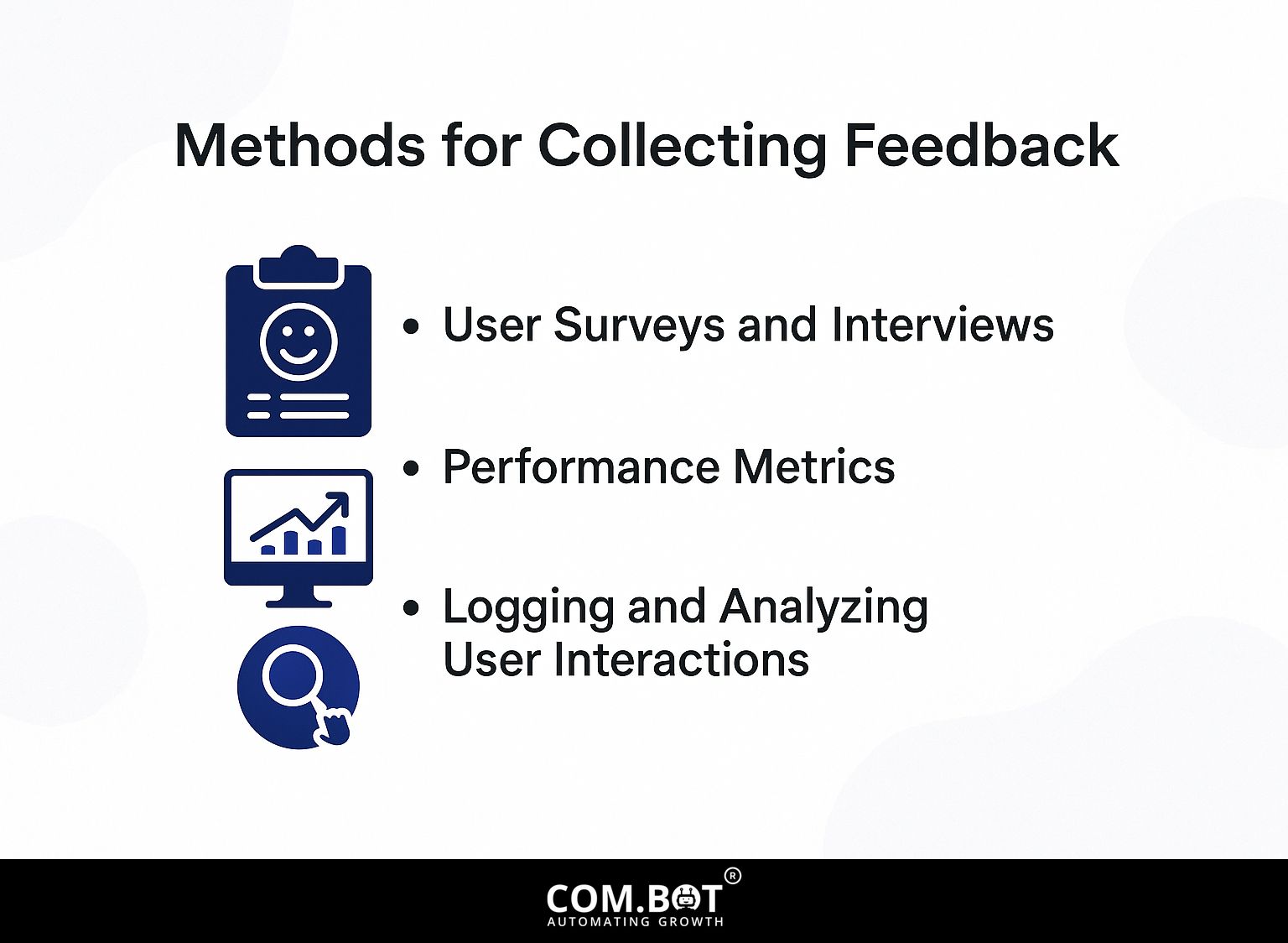
Collecting user feedback helps improve AI systems and make them more user-friendly. This process benefits significantly from understanding various techniques for enhancing feedback mechanisms.
User Surveys and Interviews
Gathering feedback through surveys and interviews provides useful details about users’ experiences and their expectations for AI systems.
To create a useful user survey, begin by clearly stating your objectives-what exact details are you trying to find? Use tools like SurveyMonkey or Google Forms to distribute easily.
When formulating questions, aim for clarity and specificity. Open-ended questions, such as ‘What features do you value most in AI tools?’ can yield rich, detailed feedback. Consider using rating scales to quantify user satisfaction.
After collecting feedback, look through the information for trends that can help shape your improvement strategy, ensuring you meet user needs well.
Performance Metrics
Performance metrics are quantitative measures that help assess the efficacy of AI systems based on user interactions and outcomes.
Some key metrics to monitor include user engagement rates, which indicate how often users interact with your AI system, and accuracy rates, reflecting how correctly the AI performs tasks.
For instance, tools like Google Analytics can track engagement metrics such as page views and session duration. Consider measuring churn rates to understand user retention; a high churn rate may signal underlying issues.
Establish a routine for reviewing these metrics monthly to identify trends and make necessary adjustments, ensuring continuous improvement of your AI system.
Logging and Analyzing User Interactions
Recording how users interact with the system is important for seeing how they use it and spotting unusual patterns that might need system changes.
To implement logging effectively, consider using Firebase Analytics, which allows you to track events with minimal setup.
Start by integrating the Firebase SDK into your application. Define key user interactions, such as button clicks or screen views, and log these events using the ‘logEvent’ function.
After gathering the data, use Firebase’s dashboard to look at patterns, like where users stop during certain steps. This information makes your application easier to understand and use.
Improvement Techniques
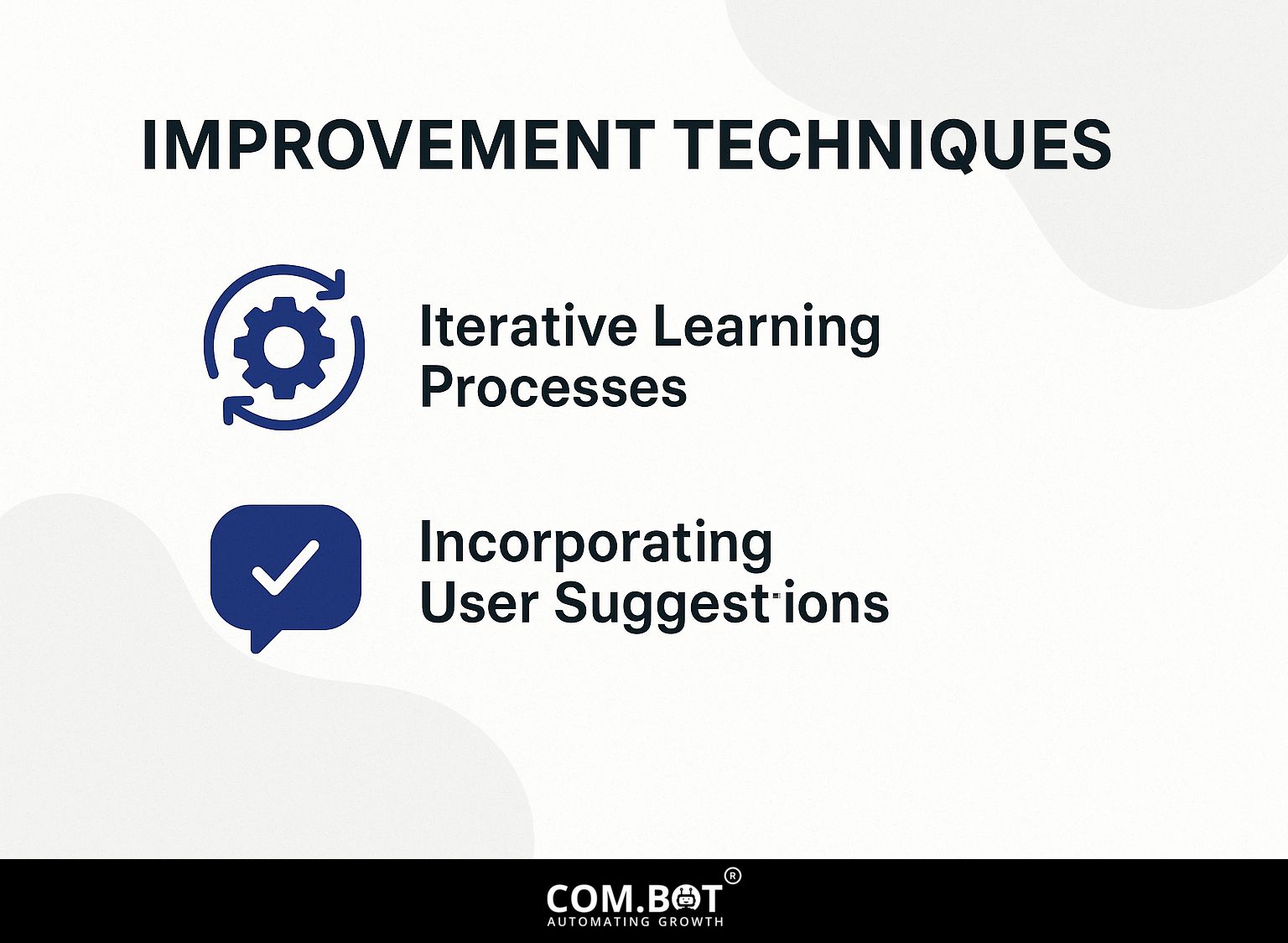
Improvement methods are important for updating AI systems to respond to user feedback and changing requirements. Curious about the role of feedback in enhancing AI capabilities? Our in-depth analysis explores effective techniques and their significance.
Iterative Learning Processes
AI systems get better over time by using feedback to make adjustments during their learning cycles.
For example, a customer service chatbot can improve its accuracy by repeatedly learning through these steps:
- First, it collects user interactions and identifies common queries.
- Next, it analyzes user feedback on responses, noting patterns in satisfaction.
- Then, developers update the chatbot by using this improved data, improving its ability to understand context and accuracy.
A case study showed that a retail chatbot increased its ability to solve problems from 70% to 85% in three months by regularly updating based on what users said.
Incorporating User Suggestions
Including user feedback builds a sense of belonging and makes the AI system better suit what users want.
To gather user suggestions well, use feedback forms with tools such as Google Forms or Typeform, which let users give detailed answers.
Once gathered, prioritize these suggestions using Trello by creating columns for ‘Ideas,’ ‘In Progress,’ and ‘Completed.’ This method enables clear visualization of the suggestion workflow and helps implement changes based on user demand.
For example, if users frequently request a specific feature, place it in ‘In Progress’ to indicate it’s being worked on, ensuring transparency and engagement.
Challenges in Feedback Implementation
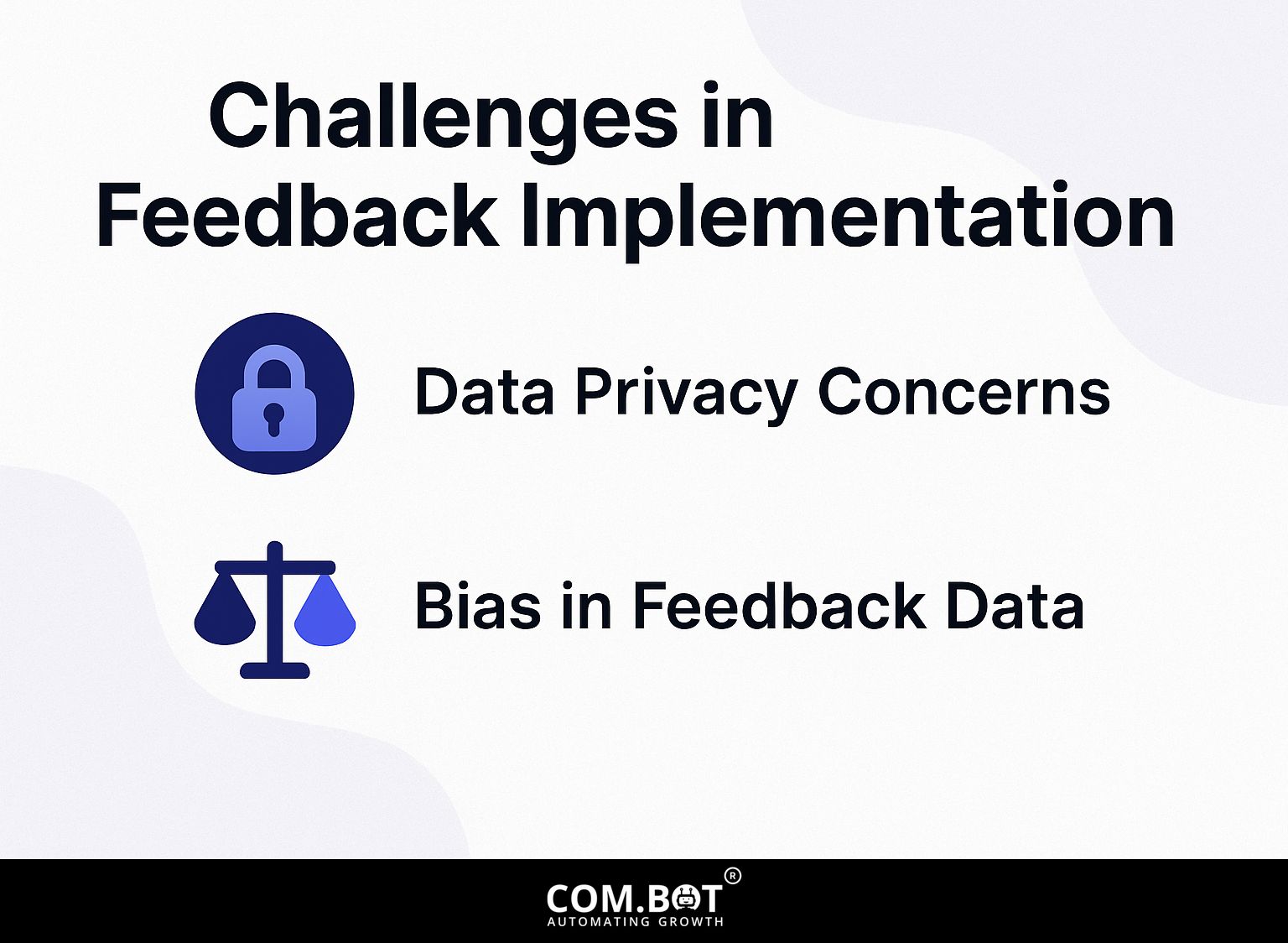
Introducing useful feedback methods in AI systems involves a series of problems that must be solved to achieve success.
Data Privacy Concerns
Data privacy concerns are paramount when collecting user feedback, as improper handling can lead to legal issues and loss of user trust.
To adhere to regulations like GDPR, follow these best practices.
- Tell users clearly why their data is collected and how it will be used.
- Use tools like Typeform or SurveyMonkey, which offer built-in compliance features such as consent checkboxes.
- Anonymize feedback by removing identifiable information before analysis.
- Regularly review your data retention policy to determine how long feedback will be stored.
By following these steps, you create a safer place for users and build their trust in your brand.
Bias in Feedback Data
If feedback data is biased, it can lead to inaccurate AI performance assessments and cause poor decisions if not managed properly.
To identify and mitigate bias, start by employing diverse data sampling techniques. This involves collecting input from various demographic groups to create a more representative dataset.
For example, in healthcare AI, algorithms trained primarily on data from one ethnicity may underperform for others, potentially leading to misdiagnoses. Tools like Fairness Flow and IBM’s AI Fairness 360 can help analyze and visualize bias in your datasets.
Regularly review your models and use methods like adjusting weights or adversarial debiasing to make them fairer.
Future Trends in AI Feedback Systems
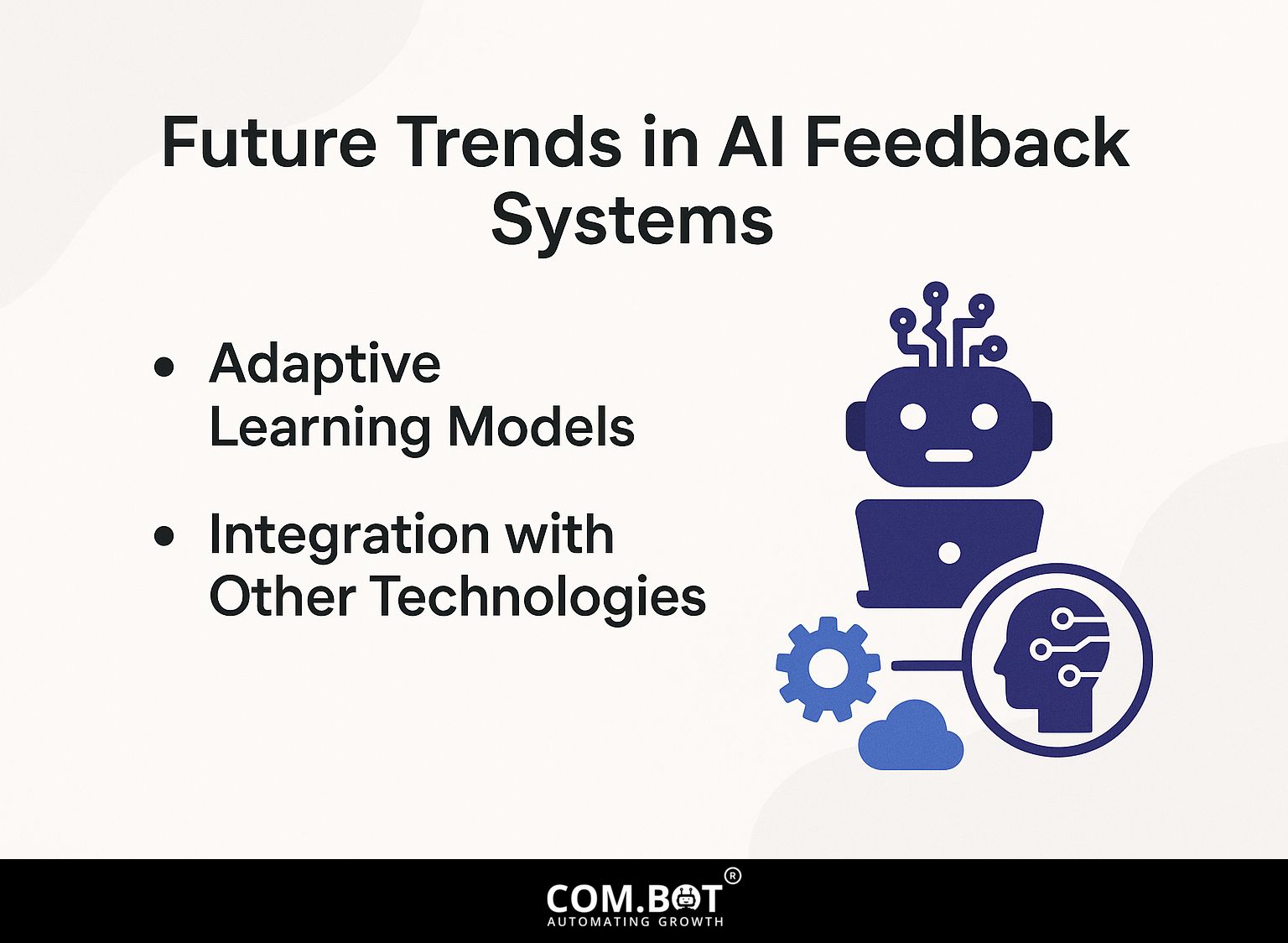
AI feedback systems are expected to change significantly as learning models improve and connect with other technologies. Worth exploring: Feedback for AI Systems: Importance and Improvement Techniques provides deeper insights into these evolving systems.
Adaptive Learning Models
Learning models use current data to make AI algorithms function better by using feedback.
For example, e-commerce sites such as Amazon and Netflix use these models to suggest products or shows to individual users. By looking at how users engage-like what they click on, buy, or watch-these platforms change their recommendations in real time.
You can use tools like Google Analytics to monitor how users interact with your site, and apply machine learning libraries like TensorFlow to create and improve algorithms. By always learning and changing, these systems make user experience better and increase conversion rates, which is important for any online business plan.
Integration with Other Technologies
Using AI feedback systems together with tools like predictive analytics and data visualization can make things clearer and make decisions easier.
For example, in the finance sector, using AI with Tableau can improve portfolio management by analyzing market trends as they happen. Analysts can make interactive dashboards that show how performance compares to targets, letting them make quick changes.
Predictive analytics in healthcare can anticipate patient admissions. AI converts this information into visual formats, helping administrators manage resources more effectively.
Using these tools creates a process where information helps shape well-thought-out plans, improving results in different areas.
Frequently Asked Questions
Why is feedback important for AI systems?
Feedback is important for AI systems as it helps them learn and get better at what they do. Without feedback, AI systems wouldn’t be able to handle new situations or find and fix mistakes.
How can feedback improve the accuracy of AI systems?
Feedback can help AI systems to identify and correct errors, leading to improved accuracy. By analyzing the results of their actions and receiving feedback on their performance, AI systems can learn and adjust their processes to achieve better results.
What are some techniques for providing effective feedback to AI systems?
There are some methods to give helpful feedback to AI systems, like reinforcement learning, imitation learning, and reward shaping. These techniques involve providing feedback in the form of rewards or penalties to guide the AI system towards desired behavior.
How does feedback contribute to the continuous learning of AI systems?
Feedback is a key component in the continuous learning process of AI systems. AI systems can get better and adjust by getting feedback on how they perform, which helps them deal with new and difficult situations more effectively.
What impact can feedback have on the ethical concerns surrounding AI systems?
Feedback is important for dealing with ethical issues related to AI systems. By giving feedback on how decisions are made, AI systems can be responsible and follow ethical guidelines.
How can collecting feedback from diverse sources benefit AI systems?
Gathering feedback from various sources, like different user groups and experts, can give AI systems a broader range of viewpoints and information. This can help to improve the accuracy and effectiveness of the AI system, as well as reduce bias and improve ethical considerations.
